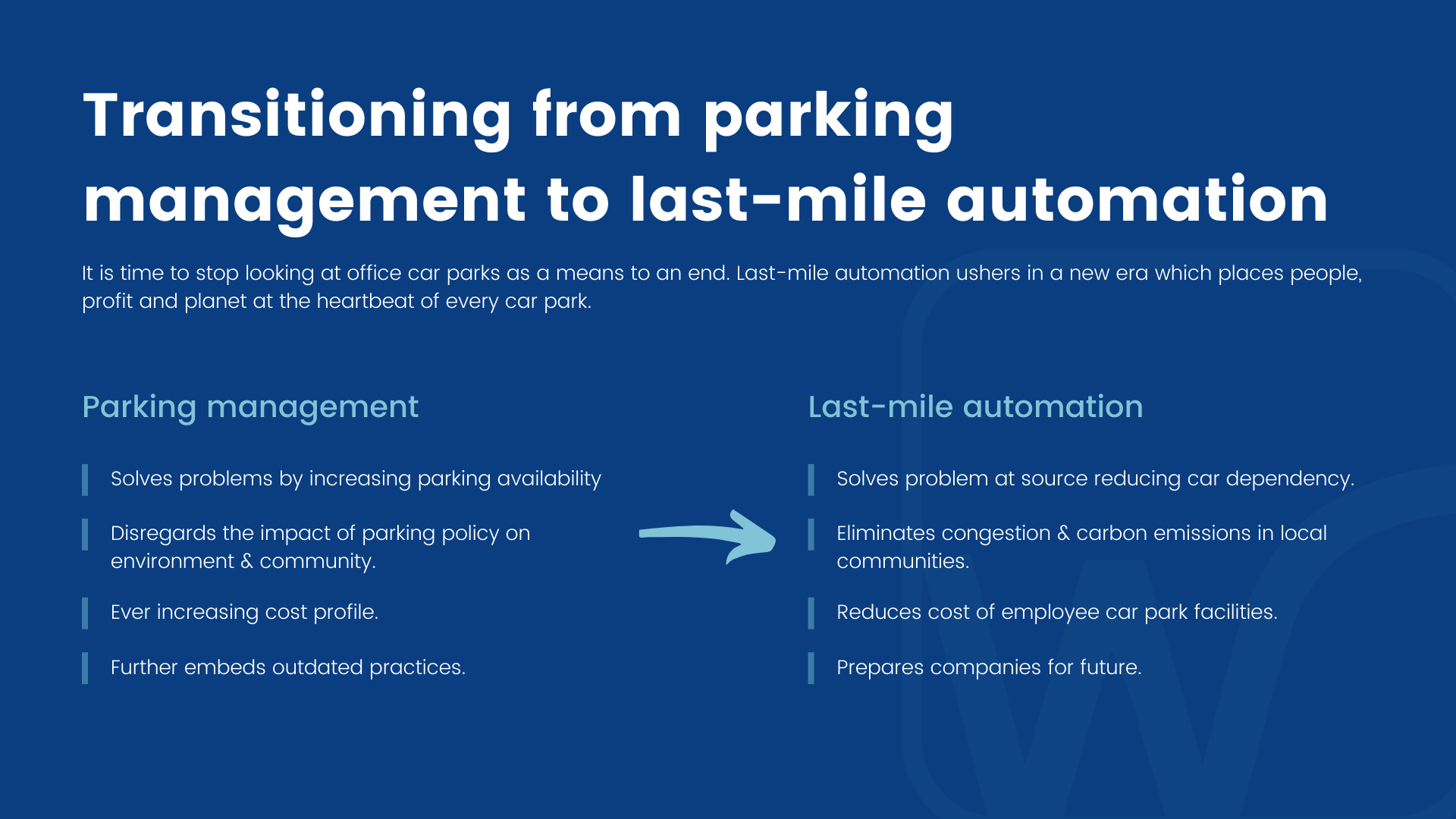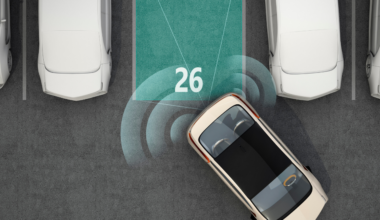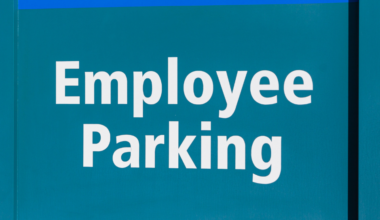Ok so you’ve heard a few people talk about last mile automation but what exactly does it mean? This blog has a look at what it means, where it comes from and why it matters.
Simply put, it is an approach that employers and landlords can use to make it easier to travel to and from their buildings. Last mile automation makes buildings & vehicles smarter to ensure a frictionless end to every journey.
Think less driving, less parking, less frustration, more transformation, more electrification and more freedom.
Want to dig a little deeper? Here is Wayleadr’s definition:
Last mile automation is the elimination of guesswork and human error from journey planning ensuring an improved travel experience, lower car usage, reduced community congestion/emmissions and accurate infrastructural planning.
Why does the world need last mile automation?
Think about how the world travels at the moment. Let’s say you are going to the office and you need to drive. Here is how the experience currently works for the majority of people.
They know that space is available at the office sometimes. This is where psychology starts to do all sorts of silly things to people. Andrew Velkey of Christopher Newport University in Virginia has studied what happens next in great detail.
People fondly recall the occasions when they secure their perfect parking spots. As a result they chase this feeling again and again and again. Even when it is an incredibly irrational thing to do. According to Velkey:
“What they (people) don’t remember is the likely instances when they secure more typical spots, as a result people overestimate the likelihood they will secure great spots. The more experienced drivers make the same mistakes as less experienced drivers”.
So we have hundreds of millions of cars hitting the road everyday in pursuit of the optimum outcome. They trick themselves into thinking parking will be available at their optimum destination and go straight there. On the way they pass by many much more rational options.
The odd day, they get lucky and their perfect space is available. However, most of the time it isn’t and they have to turn around and go find another space.
So what? It’s only an extra few minutes here and there you could say? However, think about this issue at scale? If you work in a business campus with 10,000 people and they all take a chance on the best case scenario at 8:30am on a wet winter morning, what is going to happen? Chaos.
This small psychological trick we play on ourselves is a major cause of congestion, parking problems, stress, carbon emissions, and real estate overspend. Everyday people are wasting time and money, very unnecessarily.
How does last mile automation solve these problems?
Employers & building owners have been unknowingly enabling this chaos for years. Last mile automation gives them the framework they need to solve these problems once and for all.
There are a massive amount of variables in the last mile of every journey. By bringing things like off-site & on-site wayfinding, access management and parking allocation into one ecosystem we are ensuring every journey is as short as possible
How? It is simple, we just need to create a connection between our vehicles and our buildings to eliminate any uncertainty.
Imagine, if everyday before an employee sets foot in their car, they know whether they will have parking privileges at the office or not. Maybe they will have a parking allocation but it will be at an off-site overflow car park.
This takes the guesswork out of journey planning for everyone. The building manager knows exactly who is going to be coming in and when. While the employee has certainty and can plan their journey, be this a journey by car or if parking is unavailable, they can look at other options like cycling or public transportation.
What is the difference between parking management and last mile automation?
The era of parking management is coming to a close. Businesses, communities and the planet can’t continue to solve problems by just increasing parking availability and budgets. Last mile automation takes a longterm and sustainability driven approach to these questions.
In the short-term both approaches can yield the same operational outcome of getting everyone to work happily. However, last mile automation will do this today, while driving cost & carbon reductions but will also prepare businesses for the commute of tomorrow.

Where does last mile automation come from?
Last mile automation was a concept coined by Wayleadr in 2022. Frustrated by the short-term approach of many businesses when it came to solving parking challenges, the Wayleadr team embarked on building a framework that would deliver the results businesses and employees need while also delivering for local communities and the planet.
The cars of the future need a better way to finish journeys.
The planet needs to find a better way to move people around.
Who is going to lead this change?
Wayleadr
How can you introduce last mile automation to your business or building?
Getting started only takes a matter of minutes. Join companies like eBay, Sanofi & CBRE in rolling-out last mile automation. Schedule a demo to get started.
Share on facebook
Facebook
Share on twitter
Twitter
Share on linkedin
LinkedIn




1 comment
I appreciate you saying that last-mile automation provides them with the structure they need to permanently resolve these issues. My mom needs help with her home’s design and maintenance. I’ll advise her to employ building control automation services to address any issues with her home.